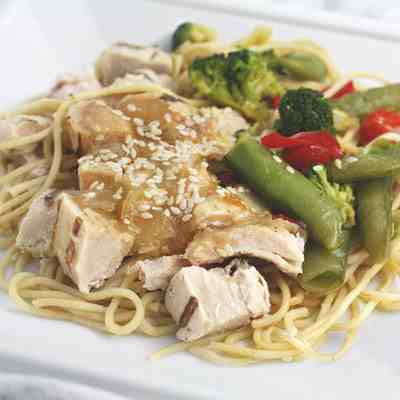9 Biggie-Sized Tips to Practice Portion Control

Tips to Practice Portion Control for Weight Loss
How’s your diet?
If you’ve gained a few pandemic pounds over the past year, you’re not alone.
About 74 percent of adults in the U.S. are overweight or obese, according to the Centers for Disease Control and Prevention.
Here’s the thing…
It’s a risk factor for things like heart disease, stroke, diabetes, and high blood pressure. The good news...you can tip the scale in the right direction.
One of the easiest ways to do it...practice portion control. Here’s how:
1. Use a smaller plate
Try it. Next time you’re ready to dish up, use a salad plate. You know...it’s like half the size of a typical dinner plate.
Dish up. Take time to chew your food. And if you’re still hungry for seconds, you’ll still be eating less than loading a dinner plate.
2. Section off your plate
Ever seen those kid-friendly plates with sections? You know, so the green peas don’t touch the applesauce. LOL.
You don’t need to use one of those plates. But you can visually section off your plate to help you practice portion control. Here’s how:
- Half a plate: Dish up with fruits and vegetables
- Quarter of a plate: Add a healthy protein (lean beef, chicken, turkey, eggs, fish, beans)
- Quarter of a plate: Include complex carbs (vegetables or whole grains)
That’s a full-plate. But it’s a smart way to eat that isn’t loaded with empty calories.
3. Gauge portion sizes with your hand
Let’s be honest. Most of us aren’t that good at eyeballing portion sizes. You’ve probably dished up more than you could eat before, right?
Is there an easier way to measure portion sizes without breaking out the scale and measuring cups? Yes.
Use your hand to measure portion sizes like this:
- Palm = Serving size for protein-rich foods like lean beef, fish, chicken, turkey, and legumes. One palm for women. Two for men.
- Fist = Serving size for fruits and vegetables. One fist for women. Two for men.
- Cupped-hand = Serving size for whole grains and starchy vegetables. One cupped-hand for women. Two for men.
- Thumb = Serving size for high-fat foods like butter, oil, and nuts. One thumb for women. Two for men.
4. Dining out? Ask for a to-go box when you order
Guess what? Fast food and restaurant meals can be up to eight times larger than a standard serving size. That’s a lot of food AND a lot of extra calories.
But there’s a simple fix. Split an entree with someone else. Or just ask for a to-go box when you order. When your food arrives put half of it away. Easy, right?
5. Drink water before every meal
Here’s another easy way to practice portion control.
Drink a full glass of water before you eat. That’s it.
You’ll feel fuller and eat less food. Plus, water contains zero calories. Win-win.
6. Chew your food
Ever grabbed a bite to eat, wolfed it down, and still felt hungry?
It takes your brain up to 20 minutes to realize you’re full. So if you eat really fast, you can pack in way more calories than you need.
There’s an easy fix. Slow down. Chew your food. Take a bite. Then put down your fork, chew and swallow. And take time to enjoy a dinner table conversation.
You’ll eat fewer calories.
7. Stop eating out of the container
You know what we’re talking about. Sit down in front of the TV with a bag of chips thinking, “I’ll just eat a few.” And by the time your show is over, you’ve polished off the bag.
That ever happen?
Research shows people eat more when they eat straight from the package, bag, or container.
When you’re hungry skip the eat-out-of-the-container method and dish up a serving size.
You’ll still enjoy the food, but without overeating.
8. Read food labels
Seriously, this takes you a few seconds. Pay attention to serving size. A lot of times what you think is a serving size turns out to be 3 or 4 servings.
The food label gives you info about serving size, calories, and other details.
You can also look up serving size and calorie info with tools like MyFitness Pal, Samsung Health, Weight Watchers, and other food tracking apps.
9. Keep track of what you eat
You can write everything down in a food diary, take pictures of what you eat, or use a
mobile app to record all your meals and snacks.
One recent study found that people who kept a daily food diary for six months lost twice as much weight as people who didn’t.
Keeping track of what you eat helps you be more mindful of your food choices.
Hungry to improve your health and learn to practice portion control? Use these tips to keep your diet on track.
Or check out our complete list of Portion Control Meals made with fresh ingredients and the perfect serving size.



 INSURANCE CUSTOMERS CLICK HERE!
INSURANCE CUSTOMERS CLICK HERE!
